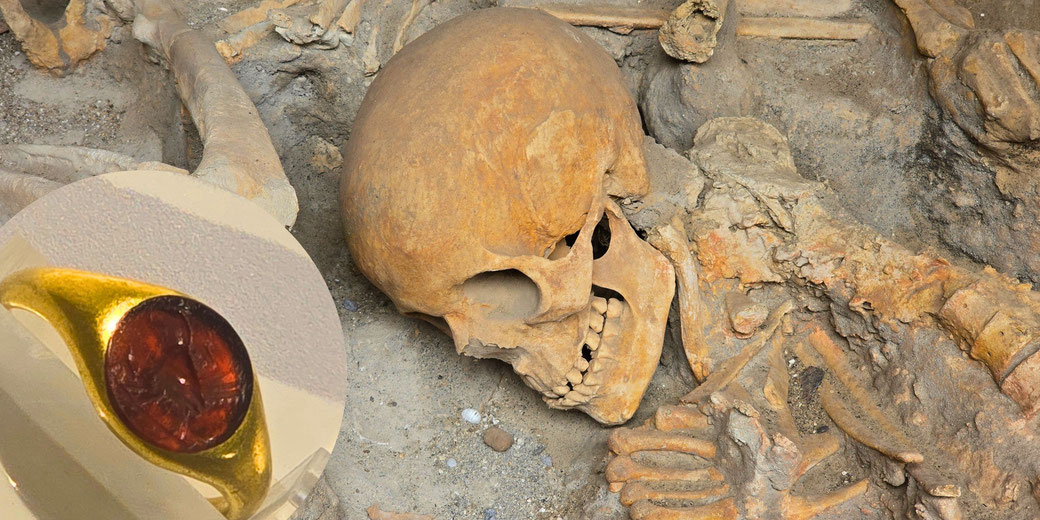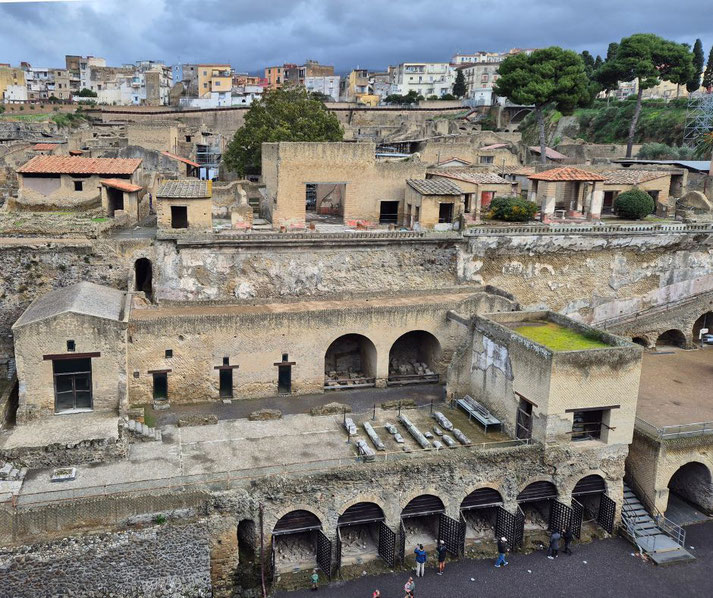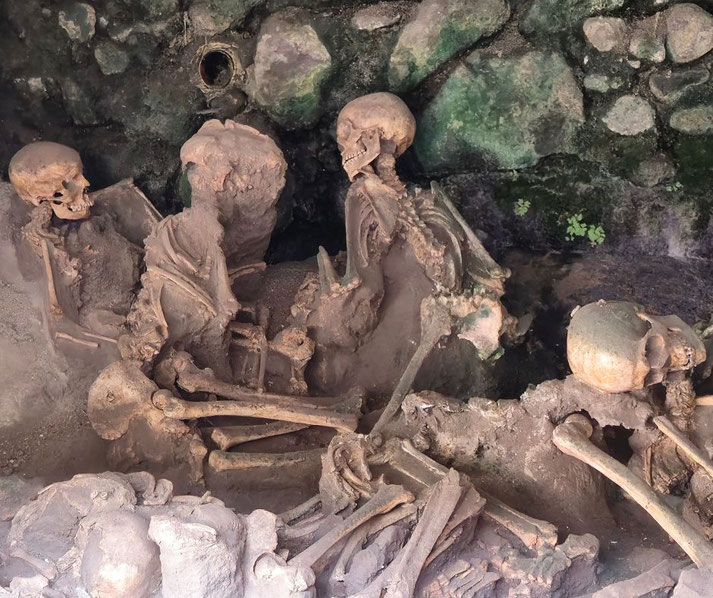The Ringed Lady of Herculaneum: Tragic last moments of a wealthy Roman woman

In a sudden moment on a very hot August day in 79 CE, the Roman seaside town of Herculaneum practically disappeared forever.
Unlike the more famous destruction of Pompeii by falling ash from the eruption of Mount Vesuvius, Herculaneum suffered a different fate.
Its citizens were covered by volcanic blasts that carried extremely hot gases and volcanic material that travelled at speeds that left no time for escape.
Among the hundreds who perished, one woman’s remains would later stand out in the archaeological record because of a apprent love of wealth.
She has become known as the Ringed Lady of Herculaneum.
Discovery in the Boathouses
Inside the ancient city’s boathouses near the shoreline, archaeologists uncovered a group of skeletons huddled together.
These people had likely taken refuge while awaiting rescue by sea. Among them, in 1982, researchers discovered a woman’s skeleton with an especially well-preserved collection of jewellery.
Her body, along with those of others, had been exposed to intense heat, which reached temperatures estimated to have exceeded 500°C.
Though the flesh and organs had long since vanished, the bones had turned to minerals, and personal possessions give a hint of her final moments.

On the woman’s left hand were multiple gold rings, along with two gold bracelets on her arms, and gold earrings in her ears: all which earned her the title La donna dagli anelli, the 'Ringed Lady'.
One of the rings was inscribed with an image of Venus. Alongside her body, archaeologists recovered a small bag containing coins.
The presence of so many valuables raised questions about who she had been, where she had come from, and why she had carried her wealth while fleeing.
Her clothing had fallen apart, but the spread of ash and bone hinted that she had collapsed in a sitting or crouched position, perhaps overcome by the toxic gases before she could reach safety.
Theories About Her Identity
For decades, the identity of the Ringed Lady remained unclear. Some believed she may have belonged to the wealthy city class, possibly part of the household of a wealthy patron or the family of an important administrator.
Her jewellery suggested access to resources far beyond what most Roman women possessed, particularly during an evacuation.
The fact that she chose to carry her gold, rather than abandon it, may reveal something of her state of mind during those frantic final hours.
She may have believed that escape was possible, that her wealth could still be used or protected, or that it offered some comfort in facing death.
Then, in the early 2000s, advances in modern archaeological methods allowed new insights into her life.
Detailed analysis of her skeleton suggested that she had been around 45 years old at the time of her death.
Her bones displayed signs of long-term health issues, including swelling in the joints and a degree of bone thinning, which showed that she had lived through years of discomfort.
High levels of lead found in her remains matched similar findings across Roman burial sites, which was typically caused by long exposure to unsafe drinking water and dishes made with lead-based glazes.
Scientific Findings and Final Moments
Further analysis confirmed the extreme conditions of her death. Small cracks in her bones, along with evidence of heat cracking, matched patterns created by extreme heat.
Researchers concluded that she had died instantly, with soft tissue that had evaporated before the skeleton collapsed in place.
Her body had been trapped in volcanic material that later hardened into volcanic rock.
Digging at Herculaneum, especially beneath the boathouses, showed more about the town’s last hours and those who had died along side the Ringed Lady.
Among the roughly three hundred people who died in that location alone, there were others who carried valuables, while some who clutched children and others who seemed to have tried to shield loved ones.
The Ringed Lady was clearly surrounded by others in similar distress and appeared to have been part of a desperate crowd trapped by the sea.
According to the Roman writer who witnessed the eruption, a Roman fleet under Pliny the Elder had tried to rescue people, but the attempt failed when the wind turned against them and thick smoke covered the coast.

Memory and Meaning
So what can we conclude about this myseterious person? In life, the woman who became known as the Ringed Lady was almost certainly a member of the upper class and was well-known in the community.
This can be deduced from the quality fo her jewellery, since it was carved with important symbols that hint at the importance of personal identity built on social status.
In death, however, she became one of the most powerful symbols of the disaster.
To us, her remains offered a human connection across nearly two thousand years, which help viewers to imagine the fear and the finality of Vesuvius’s eruption.
Unlike painted frescoes or broken pottery of the more famous Pompeii excavations, her bones and rings show us a real woman who tried to survive.
Her tragedy lay in both her untimely death and in the ordinary decision to carry the treasures of her life with her, perhaps believing she would see another day.
Instead, her last act left behind a frozen reminder of loss and memory.
What do you need help with?
Download ready-to-use digital learning resources
Copyright © History Skills 2014-2025.
Contact via email
With the exception of links to external sites, some historical sources and extracts from specific publications, all content on this website is copyrighted by History Skills. This content may not be copied, republished or redistributed without written permission from the website creator. Please use the Contact page to obtain relevant permission.





